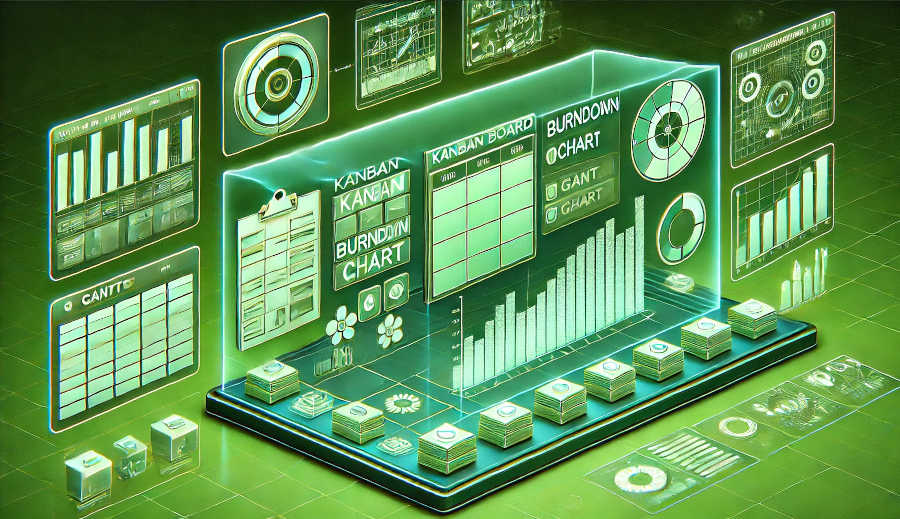The Integrated Product Development (IPD) process has gained significant traction in the business world as a comprehensive approach to product development. At the heart of this process lies the Product Development Core Process (PDCP), which is crucial for ensuring seamless product development from concept to launch. A key aspect of PDCP's success is its cross - departmental collaboration mechanism. This mechanism breaks down the silos between different departments such as R&D, marketing, sales, manufacturing, and finance, enabling them to work together towards a common goal of creating a successful product.
Cross - departmental collaboration in PDCP within the IPD process is not just about getting different teams to communicate. It is about aligning their goals, sharing knowledge, and integrating their unique skills and expertise. When departments work in isolation, there can be delays, misunderstandings, and a lack of overall product vision. For example, R&D may develop a product with advanced features but without considering market demand or manufacturing feasibility. By contrast, an effective cross - departmental collaboration mechanism in PDCP ensures that all aspects of the product, from its design to its marketability and profitability, are considered from the very beginning.
In today's fast - paced and highly competitive business environment, the ability to develop products quickly and efficiently is essential. The cross - departmental collaboration mechanism in PDCP helps achieve this by streamlining processes, reducing rework, and enabling faster decision - making. It also promotes innovation as different perspectives are brought to the table, leading to the creation of more unique and market - ready products.
The Role of Clear Communication Channels
Clear communication channels are the foundation of effective cross - departmental collaboration in PDCP. In an IPD process, different departments have different terminologies, priorities, and ways of working. Without proper communication channels, misunderstandings can easily occur, which can derail the product development process. For instance, the marketing department may use terms related to market trends and customer preferences, while the R&D department may focus on technical specifications and engineering concepts.
Establishing regular meetings, both formal and informal, is one way to ensure clear communication. These meetings can be used to share progress updates, discuss challenges, and make decisions. For example, a weekly cross - departmental meeting can provide a platform for each department to report on what they have accomplished, what issues they are facing, and what they need from other departments. This open sharing of information helps in early identification of potential problems and allows for timely resolution.
In addition to face - to - face meetings, digital communication tools such as project management software, instant messaging platforms, and shared document repositories are also crucial. Project management software can be used to track the progress of different tasks across departments, assign responsibilities, and set deadlines. Shared document repositories enable all team members to access the latest product information, such as design specifications, market research reports, and manufacturing plans. This real - time access to information ensures that everyone is on the same page and working towards the same goals.
Aligning Goals and Incentives
Another important aspect of the cross - departmental collaboration mechanism in PDCP is aligning the goals and incentives of different departments. In many organizations, departments may have their own individual goals that may not always be in line with the overall product development goals. For example, the sales department may be focused on achieving short - term sales targets, while the R&D department may be more concerned with developing a high - quality, innovative product over a longer time frame.
To address this, organizations need to define clear and common goals for the product development process. These goals should be cascaded down to each department, so that everyone understands how their work contributes to the overall success of the product. For instance, if the overall goal is to launch a new product within six months with a certain level of market share and profitability, each department should have specific targets that support this goal. The R&D department may be tasked with completing the product design within a certain time, the manufacturing department with setting up the production line, and the marketing department with creating awareness and generating pre - orders.
Incentives also play a vital role in aligning departmental efforts. By tying rewards to the achievement of common goals, organizations can motivate departments to work together. For example, if the product meets or exceeds its market share and profitability targets, all departments involved in its development can receive a bonus or other forms of recognition. This not only encourages collaboration but also fosters a sense of ownership and teamwork among the departments.
Knowledge Sharing and Skill Integration

Knowledge sharing and skill integration are key elements in the cross - departmental collaboration mechanism of PDCP. Each department in the IPD process has its own unique knowledge base and set of skills. The R&D department has in - depth technical knowledge, the marketing department understands market trends and customer behavior, the manufacturing department has expertise in production processes, and the finance department is well - versed in cost management and financial analysis.
When these departments collaborate effectively, they can share their knowledge and integrate their skills to create a more comprehensive product development approach. For example, during the concept generation phase, the marketing department can share market research findings with the R&D department. This information can help R&D come up with product ideas that are more likely to be successful in the market. In turn, the R&D department can provide technical insights to the manufacturing department, enabling them to plan for the production process more effectively.
To facilitate knowledge sharing and skill integration, organizations can organize training sessions, workshops, and cross - departmental rotations. Training sessions can be used to teach employees from different departments about the basic concepts and processes of other departments. Workshops can bring together employees from various departments to solve specific product development problems, encouraging them to share their knowledge and skills in a practical setting. Cross - departmental rotations allow employees to gain hands - on experience in different departments, which helps in building a better understanding of the overall product development process and promotes collaboration.
Overcoming Cultural and Organizational Barriers
Despite the many benefits of cross - departmental collaboration in PDCP, there are often cultural and organizational barriers that need to be overcome. Cultural differences within an organization can lead to misunderstandings and a lack of trust among departments. For example, some departments may have a more risk - averse culture, while others may be more willing to take risks. These differences can create conflicts when making decisions during the product development process.
Organizational structures can also pose challenges. Hierarchical structures may slow down decision - making and limit communication between different levels of the organization. In some cases, departments may be so focused on their own reporting lines and internal processes that they neglect to collaborate effectively with other departments.
To overcome cultural barriers, organizations need to foster a culture of collaboration and mutual respect. This can be achieved through team - building activities, cultural awareness training, and promoting a shared vision. Team - building activities can help employees from different departments get to know each other better, build trust, and improve communication. Cultural awareness training can make employees more sensitive to the cultural differences within the organization, enabling them to work more effectively together.
Regarding organizational barriers, organizations can consider restructuring their processes to be more flexible and collaborative. This may involve creating cross - functional teams with clear decision - making authority, flattening the organizational structure to reduce bureaucracy, and implementing performance metrics that measure cross - departmental collaboration.
Conclusion
In conclusion, the cross - departmental collaboration mechanism in PDCP within the IPD process is of utmost importance for the successful development of products. Clear communication channels, aligned goals and incentives, knowledge sharing and skill integration, and the ability to overcome cultural and organizational barriers are all essential components of this mechanism.
By establishing clear communication channels, departments can share information effectively, reducing misunderstandings and ensuring that everyone is working towards the same product goals. Aligning goals and incentives motivates departments to collaborate and take ownership of the product development process. Knowledge sharing and skill integration bring together the diverse expertise of different departments, leading to more innovative and market - ready products. And by overcoming cultural and organizational barriers, organizations can create an environment where cross - departmental collaboration can thrive.
In today's highly competitive business landscape, organizations that can master the cross - departmental collaboration mechanism in PDCP will have a significant advantage. They will be able to develop products more quickly, with higher quality, and at a lower cost. This will not only lead to increased customer satisfaction but also to improved profitability and long - term business success. Therefore, continuous investment in improving the cross - departmental collaboration mechanism in PDCP should be a top priority for organizations committed to excellence in product development.
ARTICLE TITLE :The cross-departmental collaboration mechanism of PDCP in the IPD process ,AUTHOR :ITpmlib

















